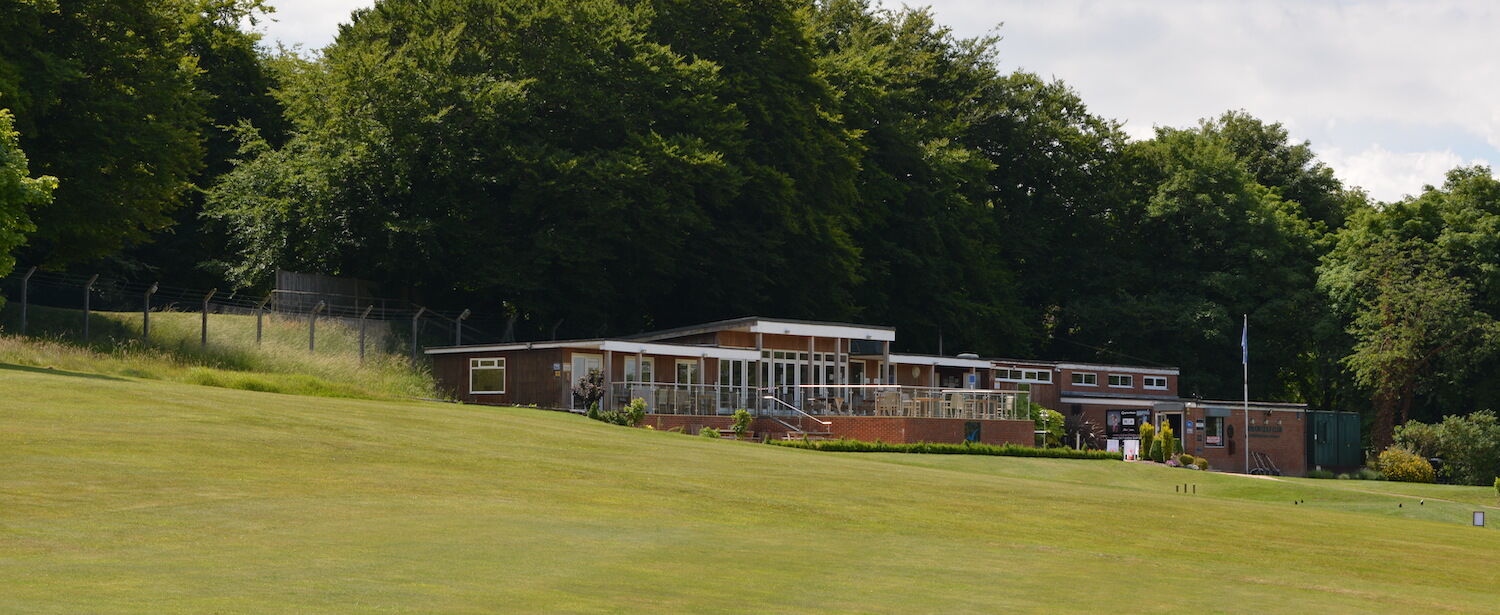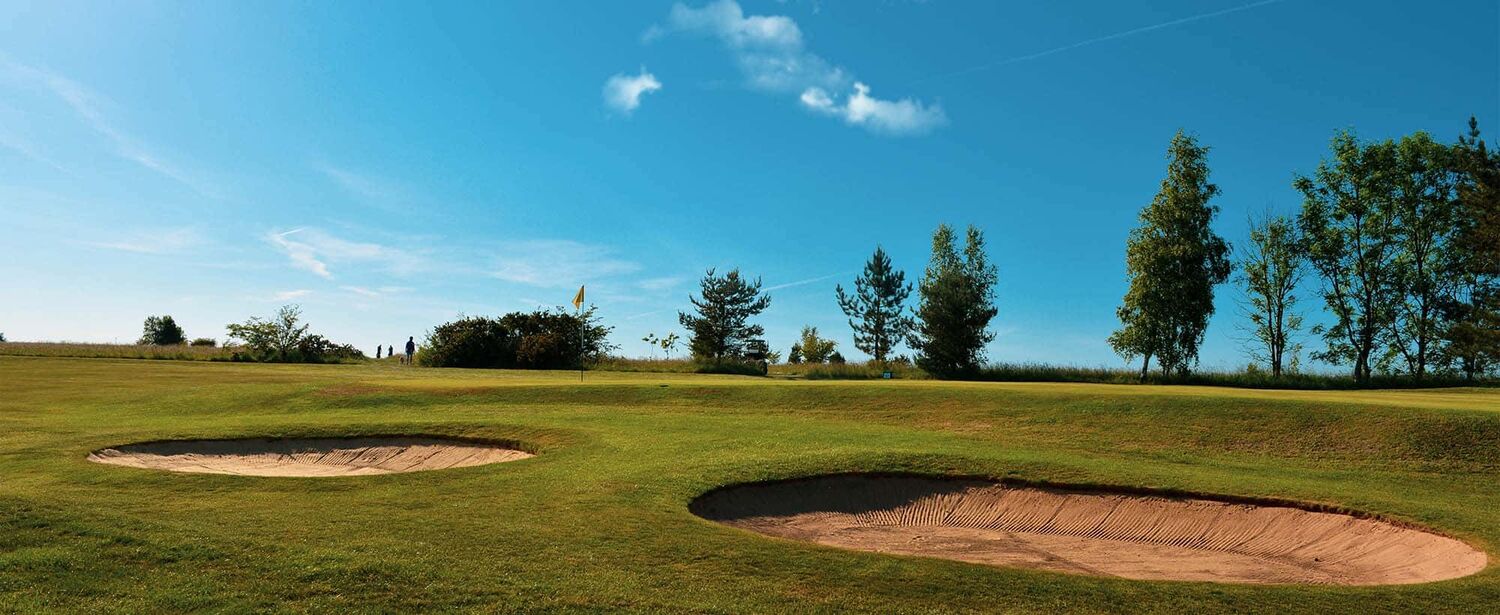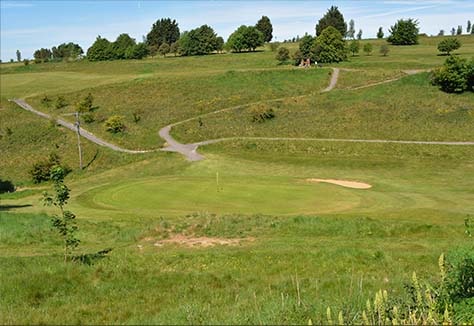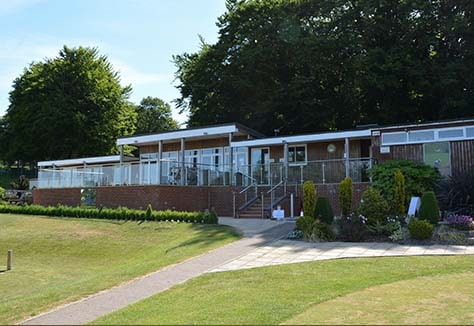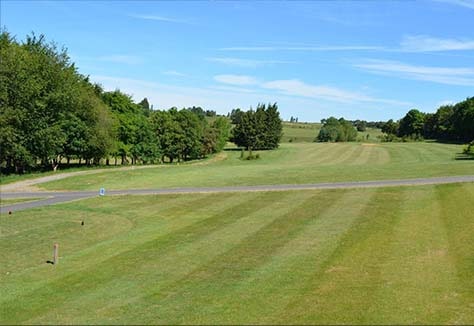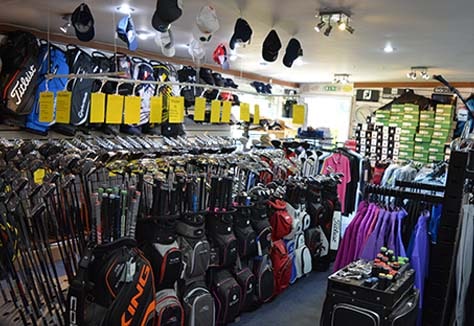History
Upavon Hill was originally home to earlier ‘tenants’ including the Romano British and pre-medieval earth works which include a sheep fold located all over the current course. This fold may have been a permanent penning surrounded by hurdles or hedges from the 18th or 19th century.
The first golf shots however were played on the Upavon Downs in the summer of 1912.
Upavon Golf Club owes its existence to the early airmen of the nation and has continued to be directly impacted by the RAF, its previous owner, from its birth in 1912 until the present day. Indeed it was in the summer of 1912 when the first aviators of the newly formed Royal Flying Corps arrived, both to establish the new flying instructor training school and to lay the first crude golf course for recreational purposes.
On 13 May 1912 Upavon airfield commenced training pilots of the military and naval wings of the newly formed Royal Flying Corps (RFC) later to become the Central Flying School (CFS).
Construction of the airfield began on 19 June on some old cavalry training gallops, 1.5 miles from Upavon village. Upavon, therefore, is the oldest flying training school in the world. The land was bought by the MOD for £40,000.
Upavon Aerodrome Station Insignia was a Pterodactyl Rising From Rocks symbolizing the stations connection with the early days of Flying and a reference to nearby Stonehenge. The Station motto was In Principio Et Semper, Latin for In The Beginning and Always. Captain Godfrey Paine, a naval officer, was the 1st Commandant until 15 November 1915. Major Hugh Trenchard was Assistant Commandant at the Central Flying School and later became Chief Of The Air Staff and was affectionately known as The 'Father of the RAF'. When the RAF vacated the premises in 1993, the base was renamed Trenchard Lines in his honour.
By the end of 1913 not only was the golf course well established but the airmen’s recreational and leisure time was well catered for with a squash court, two tennis courts, a billiard table and facilities for cricket and football.
During 1913 Winston Churchill, then the First Lord of the Admiralty, was a passenger in a flight by a Farman MF.7 biplane while visiting Upavon. Throughout the First World War the RFC carried out both aerial reconnaissance and aerial photography. In addition two officers based at Upavon developed the 'Bomb Sight' which would later be used in a very successful manner at the Western Front.
At the outbreak of war, in August, during its two years of operations graduates of the CFS provided 93 of the 153 men who made up the Flying Corps taking the field in France.
Built in 1915 The Officers' Mess is a fine example of classic British military architecture. Prior to the RAF's departure from Upavon, it was the oldest RAF Officer's Mess in use. Many of the buildings originally constructed at Upavon still stand.
During 1917 a Sopwith Pup landed upside down on the Golf Course, flipped over on its right side and then took off again. On being asked why he returned to the air the trainee pilot stated “it was forbidden to land on the golf course”.
By the end of World War One Upavon Central Flying School was expected to graduate up to 600 pilots per year.
On the 1 April 1918 the Royal Flying Corps became the Royal Air Force, and the base became known as Royal Air Force Station Upavon (RAF Upavon).
Accordingly, the former Army Central Flying School became Royal Air Force Central Flying School (RAF CFS). The RAF CFS became the centre of training of all RAF flying instructors. It is therefore appropriate to correctly refer to Upavon as the "birthplace" of the Royal Air Force.
On 31 August 1927 at 7.15 am Lieutenant Colonel Frederick F. Minchin, known to his colleagues as 'Dan', Captain Leslie Hamilton, and 63 year old Princess Loewenstein-Wertheim took off from Upavon airfield in a Dutch Fokker Monoplane called St Raphael in a bid to become the first aviators to cross the Atlantic from east to west. Their airplane was last sighted some 800 miles (1,300 km) west of Galway heading for Newfoundland. Sadly, the St Raphael was never seen again, and the fate of Lieutenant Colonel Minchin, Captain Leslie Hamilton and Princess Loewenstein-Wertheim remains a mystery.
At some time during May 1938 His Majesty King George VI visited the CFS at Upavon. When war broke out in 1939, Douglas Bader used his RAF Cranwell connections to rejoin the RAF as a Flying Officer after his forced medical retirement. At the end of November 1939 he was posted to the "Central Flying School" Upavon for a refresher course on modern types of aircraft. Douglas was a keen golfer and he played on the Upavon course at this time.
Upavon Golf Club’s oldest surviving trophy, The Upavon Vase, was played for the first time in 1942 and won by a Sgt H Fielding.
During the Second World War, the CFS moved from Upavon to take up residence at RAF Little Rissington, Gloucestershire. During this time, Upavon became the No.7 Flying Instructor’s Training School with an impressive establishment of 120 trainers. Magisters were the main type of aircraft used for training during this period.
In the 1950s a 9 hole Golf Course was in use but was not very well maintained by today's standards. The course was made up of huge areas of long rough with thin fairways and small greens mown occasionally.
The newly created Headquarters building for Transport Command was developed throughout the 1960s. At this time the Harrier Jump Jet (the first jet engine aircraft to land at Upavon) was in use at the aerodrome.
On 16th June 1962 Upavon held a static air flying display to celebrate the 50th Anniversary of the Royal Flying Corps. His Royal Highness Prince Philip, Duke of Edinburgh, was in attendance. It was anticipated that 50,000 people would be there but 250,000 turned up and blocked the country roads for miles around.
In 1964 the AOC of the camp cancelled all civilian memberships with immediate effect but one year later the new AOC allowed all the civilians to rejoin again.
Dai Rees, who played in 9 Great Britain Ryder Cups and captained the team on five occasions in 1955, 1957, 1959, 1961 and 1967, played at Upavon twice in the sixties in his heyday and shot 37 for 9 holes in 1969 playing alongside three Upavon members.
The first early buildings to be used as a Clubhouse and Bar were constructed in 1967 and for supplies members used to roll barrels of beer down from the Officers' Mess.
Membership of Upavon Golf Club was opened up to civilians other than those employed by the RAF. However there were no lady golf members during this period. At this time in a hot summer if the Green's needed water the Fire Tender from the camp would drive onto the course and hose the greens.
The early 1970s saw an increase in membership activity at the club. The first recorded Captain was Wg Cdr N Taplin in 1970 with the first Club Championship being played in 1971 and won by Flt Lt P Groombridge. In 1971 the Club became affiliated to the Wiltshire County Golf Union and became the 10th member.
On 1 September 1972, the former RAF Transport Command, now RAF Air Support Command, was merged with RAF Strike Command. On the same date, No.46 Group was reformed at Upavon, which meant that Upavon was to maintain a long-standing link with RAF transport services.
At this time Ken Gear (Captain 1973 and 1974) made significant changes to the course. A grant was obtained through Air Chief Marshall Sir Crowley Milling to get water to the greens. The first watering system was installed at a cost of £2300.
1974 saw Upavon Ladies' section formed with Joan Jackson taking the role of first Lady Captain. The civilian membership was capped at 135, while the Service membership of the golf club fluctuated around 165 (total 300) with as many as 1200 additional visitors a year reported.
During this period there were many improvements to the clubhouse. A men’s changing room extension was added, similarly the ladies' changing rooms, bar and kitchen were revamped. Additionally the whole clubhouse was redecorated by members with carpets, curtains and furniture replaced. Most significantly oil central heating was put in.
In January 1992 the R.A.F. announced that a fence was needed around the perimeter of the camp for security and members would have to be escorted from the Guard Room down to the Golf Club. This would be very inconvenient for the members as access to the Golf Club at that time was through the Camp. June 1992 and a search for a new entrance begins. Mike Bridgeman and Doug Wootton spend many hours searching for a solution with the most practicable being to extend the sewage works road. In the winter of 1992 using materials from the Amesbury bypass and with the help of an RAF workforce the current entrance road was constructed. The cost of the work was a bargain at only £5000.
In February 1993 it was confirmed the RAF were to leave Upavon and after meetings with the Golf Club Chairman, Wg Cdr D Thow, a strategy document was prepared to approach RAF High Wycombe, who were responsible for the Golf Club's administration, and request that the Civilian membership take control of the Golf Club. A steering committee of Doug Wootton, Dave Walker, Christina Kennedy, Mike Bridgeman & David Smith were formed to convince the authorities that the club would be in safe hands. Positions within the Golf Club committee, which had always been held by RAF staff, were taken over by civilians with Dave Walker taking the role of Chairman & Christina Kennedy the role of treasurer. On 1st April 1993 the Golf Club became a civilian members' club.
One of the first steps on this road to improve the image of the club was the appointment of the Club’s first Golf Professional Richard Blake aged 22 years old who commenced his role on 1st May 1993. It was also in 1993 and a month prior to Richard’s appointment that an appointment for the full time permanent Club Secretary position was made and Les Mitchell was appointed and commenced employment with the Club on 1st April 1993.
The Golf Club was formally handed over from the RAF to Upavon Golf Club in July 1993. As a result of major reorganisation of the entire structure of the Royal Air Force in the early 1990s, RAF Upavon became surplus to requirements, and the RAF was to permanently withdraw from Upavon. On 3 August 1993, the RAF officially handed over RAF Upavon Station to the British Army.
Along with key staff appointments the Club decided to move ahead on establishing a full 18 hole golf course. At the time this was extremely challenging due to both the lack of land and more importantly, the lack of finances. The land issue was resolved in due course by taking on the lease of extra MOD land to the north of the course.
On 14th March 1994 Richard Blake began the design of the 18-hole course.
In 1995 the Club acquired some additional 40 acres of land adjacent to the western boundary, enabling the construction of additional holes. Planning approval was granted in May 1995.
The club had a course construction committee consisting of Ricky Whtye (Captain), Peter White (Greens Member), Richard Blake (Pro), Les Mitchell (Manager), Bob Burkin (Greenkeeper), Doug Wootton (House Member) & Mike Bridgeman who started to meet frequently to help to create the new 18 hole layout.
The building work commenced in the summer of 1995 and the major excavation work took around four months to complete. Gaiger Brothers Ltd of Devizes were very supportive of the project and saved the club a large sum of money by providing staff and equipment for the build. The club had on loan a dumper truck, lorry and a tracked hydraulic excavator with a highly skilled driver with guidance on the ground from Richard Blake, Head Greenkeeper Bob Burkin, Deputy Head Greenkeeper Karl Chapman and new arrivals in 1995 of Colin Burry & Neil Andrews. By November 1995 the principal course development work requiring excavation, earth movement and construction was complete.
1996 saw a new car park laid out while membership increased to 400. Upavon Golf Club Limited was formed to provide trustees for the membership and to hold the deeds for the Golf Club Lease.
New changing rooms and a professional’s shop were added in 1997 to help cater for the increase in golfers with membership increasing to around 500.
On 4th May 1997 the additional holes created on the newly acquired land were brought into play forming an 18-hole, par 71 course layout of 6402 yards.
The cost of constructing the course totalled around £120,000 including £53,000 + VAT for the watering system.
December 2005 Neil King became Head Greenkeeper. Neil was Head Assistant at Filton Golf Club prior to his arrival and since then the standard of the course has improved significantly.
During 2007 major clubhouse refurbishment improving the bar and kitchen facilities and overhauling the lounge and dining areas was carried out. Under the leadership of the designated builder, Mike Venner, the membership decide to spend approximately £100,000 on completing the alterations.
Dave Walker, Upavon President, is elected as Wiltshire County Golf Union President for 2007/08. In 2009 Sue Coakley, having spent many years serving the Club in differing roles, is elected the Clubs first Lady Chairman.
In October 2011 David Hopkins becomes the first Upavon Golf Club member to ever hold a Scratch handicap and represents the Club as WCGU 2nd Team Captain.
2012 saw Upavon celebrate its 100th birthday in style, with numerous events including a Pro-Am tournament and Centenary Spring Ball in the Officers Mess. We now look forward to the next 100 years and future success of the Club.


